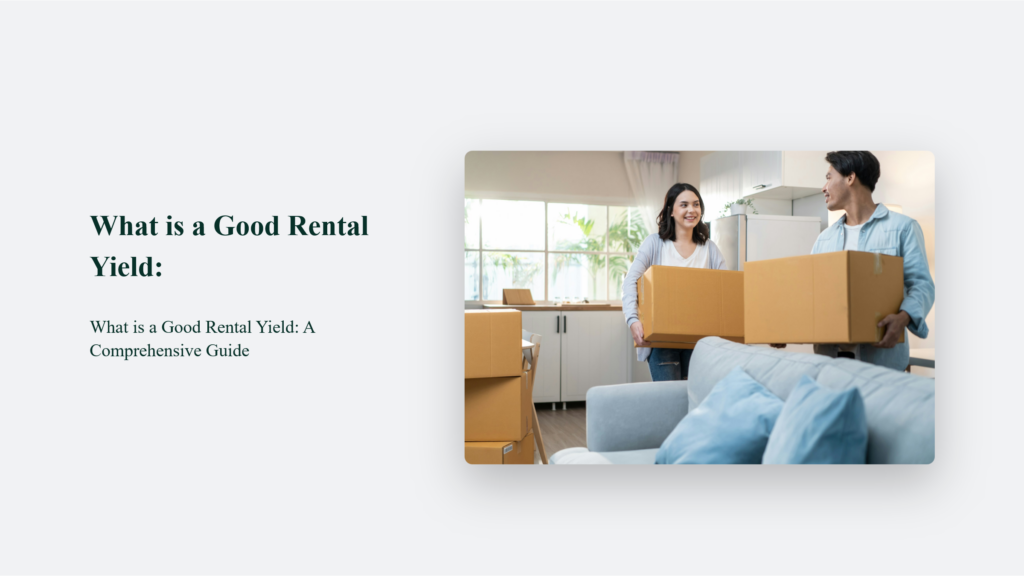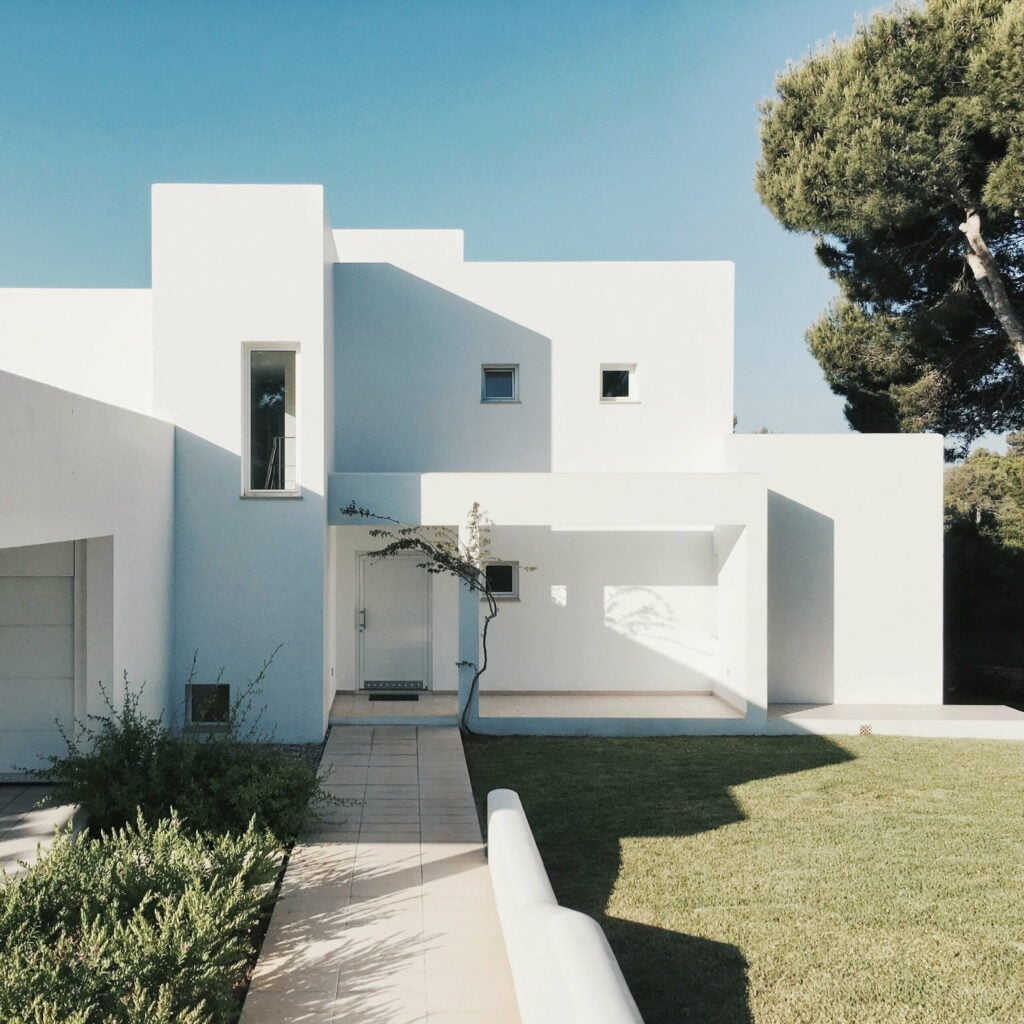Ever wondered, “What is a good rental yield?” You’re not alone. This golden nugget of real estate wisdom is often the difference between a profitable investment and a financial sinkhole. Let’s dive in and demystify it together.

Understanding Rental Yield
Understanding rental yield is fundamental for anyone interested in property investment. Rental yield is a measure of how much cash an income-generating asset produces each year as a percentage of its value. This metric is widely used in real estate to assess rental properties’ potential return on investment (ROI).
There are two main types of rental yield: gross rental yield and net rental yield.
- Gross Rental Yield: This is the simplest of the two calculations. It’s determined by dividing the property’s annual rental income by its purchase price or current market value, then multiplying this figure by 100 to express it as a percentage. For instance, if a property is purchased for $200,000 and generates $20,000 per year in rent, the gross rental yield would be 10%.
- Net Rental Yield: This takes the calculation further by considering the property’s operating expenses. To calculate net rental yield, you subtract the annual expenses (such as maintenance costs, management fees, insurance, and other operational costs) from the annual rental income, then divide this figure by the property’s purchase price or current market value and multiply by 100. This yield gives a more accurate picture of the actual return on investment because it considers the costs of running the property.
Both gross and net rental yields are valuable metrics, each offering a different perspective on the profitability of a rental property. Gross yield is useful for quick comparisons between properties, while net yield provides a deeper understanding of the actual returns after expenses.
It’s important to remember that a ‘good’ rental yield can vary depending on location, property type, and market conditions. Generally, investors look for a balance between a high rental yield and the potential for capital growth.
What is a Good Rental Yield:
What constitutes a good rental yield is a nuanced question that depends on various factors, including the property’s location, type, and the investor’s objectives.
General Benchmark for a Good Rental Yield
A commonly accepted range for a good rental yield falls between 5% to 8%. This range is often considered a healthy balance, providing enough income to cover expenses while offering a decent return on investment.
High Rental Yield Areas
In some locations, particularly areas with lower property prices or high rental demand, yields can surpass 10%. However, temporary factors such as short-term economic boosts or property undervaluation may influence these high-yield scenarios. While tempting, they may also carry higher risks or may not be sustainable in the long term.
Lower Yields in High-demand Areas
Conversely, in high-demand areas, particularly in prime urban locations or regions with high property values, rental yields might fall below the 5% threshold. In such cases, the potential for significant capital appreciation can offset a lower yield. Investors might accept lower rental incomes in anticipation of the property’s value increasing substantially over time.
Factors Influencing Rental Yields
- Property Location: A prime determinant of rental yield. High-demand areas might offer lower yields but have the potential for capital growth.
- Property Type: Different properties, like residential, commercial, or student housing, have varying typical yields.
- Market Conditions: Fluctuating demand and supply, economic conditions, and interest rates can significantly impact rental yields.
- Operational Costs: Higher operational costs can reduce net rental yield. Efficient management can help optimise these costs.
Importance of Balanced Investment Strategy
While rental yield is a critical factor in property investment, it should not be the sole focus. A balanced approach, considering rental income and potential capital growth, is advisable. Investors should assess their personal risk tolerance, investment horizon, and overall strategy when determining a ‘good’ rental yield.

Maximising Your Rental Yield: A How-To
Maximising your rental yield involves strategic upgrades, effective tenant management, and financial savvy. Here’s how you can enhance your property’s yield:
Property Improvements:
Upgrading your property can justify a higher rent. It includes modernising the interior, installing efficient appliances for lower operating costs, and possibly adding additional features like an extra bathroom or bedroom. Simple updates like fresh paint or new tiling can also attract better tenants.
Target Market Consideration:
Tailor your property to suit the needs of your target tenant market. For instance, consider providing home office space or driveway parking if your target market is working professionals. Understand the unique needs of your tenant demographic, whether they are students, young professionals, or families.
Tenant Screening and Retention:
Choosing high-quality tenants reduces turnover and repair costs. Implement a thorough tenant screening process to ensure reliability and long-term tenancy. Also, consider allowing pets, as properties allowing pets can command higher rents due to their scarcity.
Financial Management:
Properly drafted rental agreements can minimise legal risks and clarify financial expectations. To cut costs, regularly review your outgoings, like mortgage rates and property insurance. Additionally, consider implementing submetering or Ratio Utility Billing Systems (RUBS) for utilities to recover a large portion of your overall utility expenses.
Additional Income Streams:
Explore new sources of income, such as renting out storage spaces, offering furnished properties, or charging for amenities like in-unit laundry. You can also consider allowing subletting with proper conditions and fees.
Effective Property Management:
Regular property inspections and maintenance can prevent costly repairs down the line. Opting for professional property management services can save you time and help streamline operations, although managing the property yourself can save on management costs.
Rent Reviews and Marketing:
Keep your rent competitive by regularly reviewing it in line with market rates. Create compelling rental listings with high-quality photos and detailed descriptions to attract more potential tenants.
Regulatory Compliance:
Stay updated with health and safety regulations to ensure long-term tenancies and increased interest from renters.
Enhancements and Extras:
Adding ensuites, defining your target market, and offering extra services can significantly increase your rental income. These services could include parking permits, weekly cleaning, or even renting décor and furnishings for an additional fee.
Remember, every property is unique, and what works best will depend on your specific situation, location, and target market. By implementing a combination of these strategies, you can effectively maximise your rental yield.
Rental Yield Beyond Numbers:
When considering rental yield in property investment, it’s crucial to understand that it’s not the only factor to consider. The importance of capital growth and market changes play a significant role in determining your investment’s true value and potential.
Capital Growth vs. Rental Yield
Capital growth, or capital appreciation, refers to the increase in the value of a property over time. It’s critical for long-term investment strategies, offering significant returns upon selling the property. However, it’s subject to market volatility and may require a longer investment horizon. It makes it ideal for investors not heavily reliant on immediate cash flow from their properties.
Rental yield, on the other hand, is vital for investors who need regular income from their properties, like retirees or those seeking steady cash flow. It provides immediate returns and is less subject to market fluctuations, but high rental yields are often found in areas where capital growth potential is limited. It means properties with high rental yields might appreciate less over time.
Balancing Capital Growth and Rental Yield
Investing in property requires a strategic balance between capital growth and rental yield. Properties with high capital growth are usually located in areas close to city centres and are in high demand, making them easier to sell. However, they might offer low rental yields. Conversely, properties with high rental yields might appreciate little value over time, and their markets could be sensitive to economic downturns.
Why Capital Growth Matters
Capital growth is crucial for long-term financial planning. It allows investors to leverage the increased value of their property for future investments, contributing significantly to wealth creation. Properties in areas undergoing rapid development or regeneration often promise higher capital growth, compensating for potentially lower rental yields.
Calculating Rental Yield
There are two forms of rental yield: gross and net. Gross rental yield is calculated by dividing a year’s rent by the total property value and multiplying by 100 to get a percentage. Net rental yield, which gives a more accurate picture, factors in all the costs associated with maintaining the property.
The Bottom Line:
In conclusion, while a good rental yield is a crucial factor in property investment, it should be considered alongside other elements like location, property type, and market dynamics. Understanding and strategically planning your investment can maximise your chances of a profitable venture.
Frequently Asked Questions:
How is gross rental yield calculated?
Divide annual rental income by property price and multiply by 100.
What about net rental yield?
Subtract annual costs from annual rental income, divide by property price, and multiply by 100.
Can a lower yield be acceptable?
Yes, in high-demand areas or where capital growth is expected.




